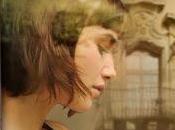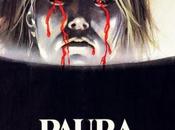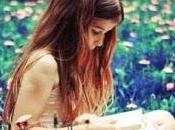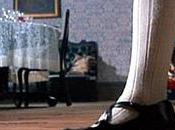
Strude Series
Serie Strude
Trine Søndergaard nasce nel 1972 ed è una fotografa/artista visiva danese. Vive e lavora a Copenaghen. Nel 1996 si diploma alla Fatamorgana, la Scuola Danese di Arte fotografica. Il suo lavoro si contraddistingue per precisione e sensibilità, qualità che coesistono con un rigoroso interrogarsi sul mezzo fotografico, i suoi limiti e ciò che costituisce un’immagine. Colmi di significati e parca emozione, i suoi lavori sono altamente acclamati per l’ intensità visuale della nostra percezione della realtà. Nel 2000 ha ricevuto il Premio Albert Renger Patzsch e da allora ha poi ancora ricevuto numerose sovvenzioni, borse di studio e riconoscimenti che comprendono anche una borsa di studio-lavoro per tre anni offertale da The Danish Arts Foundation. Trine ha esposto le sue opere in diverse mostre personali e collettive in patria e all’estero. Il suo lavoro è presente nelle maggiori collezioni pubbliche e private come per es. al MUSAC Museo de Arte Contemporáneo de Castilla y Leon, Spagna, The Museum of Fine Arts, Houston, USA; The Hasselblad Foundation, Sweden; The Israel Museum, Jerusalem; and The Danish Arts Foundation, Denmark. Le sono inoltre state commissionate opere da musei e istituzioni culturali.
Trine Søndergaard (b. 1972) is a Danish photography based visual artist. Søndergaard lives and works in Copenhagen, Denmark. In 1996 she graduated from Fatamorgana, The Danish School of Art Photography. Trine Søndergaard’s work is marked by a precision and a sensibility that co-exists with a rigorous interrogation of the medium of photography, its boundaries and what constitutes an image. Layered with meaning and quiet emotion, her works are highly acclaimed for their visual intensification of our perception of reality. In 2000 she received the Albert Renger Patzsch Award and has since then received numerous grants and fellowships, including a three-year working grant from The Danish Arts Foundation. Trine Søndergaard has exhibited in numerous solo and group exhibitions in Denmark and abroad. Søndergaard’s works is represented in major public and private collections for instance at MUSAC Museo de Arte Contemporáneo de Castilla y Leon, Spain; The Museum of Fine Arts, Houston, USA; The Hasselblad Foundation, Sweden; The Israel Museum, Jerusalem; and The Danish Arts Foundation, Denmark. In addition, she has completed public commissions for both museums and cultural institutions.
§
Qual’è stata la prima fotografia che hai scattato?
Ho avuto la mia prima macchina fotografica quando frequentavo la quarta elementare. Era una piccola Kodak rettangolare portatile, del tipo molto popolare negli anni ’80. Fotografavo quello che mi stava intorno, i miei amici e gli animali domestici. Più tardi la fotografia divenne più un metodo per investigare il mondo, piuttosto che solo un modo di registrare ciò che vedevo. E crescendo, quando iniziai a frequentare la scuola superiore e d’arte e fotografia (Danish School of Art and Photography), Fatamorgana, scoprii che potevo anche esprimere qualcosa con le mie immagini.
What was the first picture you took?
I got my first camera when I was in 4th grade. It was a small, rectangular pocket Kodak – the kind that was popular back in the 1980s. I photographed what was around me – my friends and pets. Later photography became more of a method to investigate the world, rather than only a way to register what I saw. And when I got older and went to folk high school and the Danish school of art photography, Fatamorgana, I discovered that I could also express something with my images.
Come descriveresti il tuo stile?
A dire il vero non riesco a collegare la parola stile al mio lavoro. Potrei avere uno stile, ma quando lavoro sono più interessata all’investigare un soggetto specifico o uno stato mentale, ecco dov’è riposta la mia attenzione. I miei primi lavori erano altamente aggressivi ed espressivi. Oggi le mie immagini sono meno dirette e più introverse perchè sono interessata al silenzio, alla calma interiore e ai segreti.
How would you describe your style?
I don’t really connect the word style with my work. I might have a style, but when I’m working I’m more interested in investigating a specific subject or state of mind – that’s where my focus lies. My early works were highly confrontational and expressive. Today my images are less direct and more introvert, because I’m interested in stillness, inner calm and secrets.
Hai un soggetto preferito?
I miei soggetti preferiti come fotografa sono le stanze e i ritratti. Non mi stanco mai di guardare la gente. Proprio come noi non smettiamo mai di scrutare la nostra immagine riflessa cercando di capire noi stessi e il processo d’invecchiamento a cui siamo sottoposti che costantemente ci cambia. Il mio lavoro con i ritratti è più incentrato sulla ricognizione e sulla comprensione piuttosto che sull’individuo ritratto.
Do you have a favourite subject?
My favourite subjects as a photographer are rooms and portraits. I never get tired of looking at people. Just like we never stop scrutinising our own reflection – trying to understand ourselves and the ageing process we’re all subject to and that constantly changes us. My work with portraits is more about recognition and realisation than the individual in the image.

Strude Series
Serie Strude
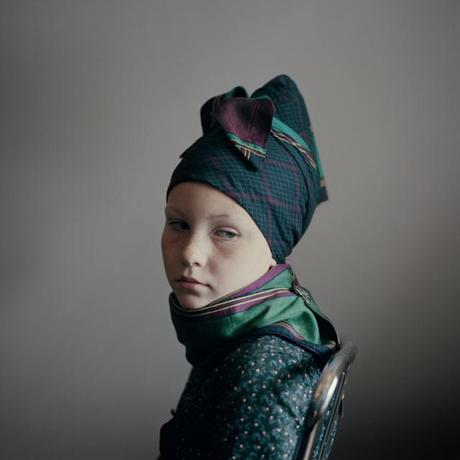
Strude Series
Serie Strude
Cosa fa di una immagine una buona immagine?
Non esiste una formula prestabilita. Il teorico francese Roland Barthes parla di una buona fotografia quando c’è un punto, un punto distinto che catturi o trattenga lo sguardo dello spettatore. E mentre questo è vero, una buona immagine è spesso una combinazione di diversi fattori: un’idea, capacità tecniche, ciò che vedi e fissi nel fotogramma. E’ spesso un processo che non puoi controllare completamente. Io penso molto prima di scattare una foto. Ci sono già troppe immagini nel mondo, quindi cerco di non scattarne troppe a mia volta. Faccio solo gli scatti che ritengo necessari.
What creates a good image?
There’s no set formula. The French theorist Roland Barthes talks about a good photograph having a punctum – a distinct point that captures or retains the spectator’s gaze. And whilst that’s true, a good image is often a combination of several factors: an idea, technical skill, what you see and frame. It’s often a process you can’t totally control. But I do think for a long time before I take a photograph. There are already way too many images in the world, so I try not to take too many. I only take the pictures I find necessary.
Ti ispiri a qualche modello?
Non ce n’è uno in particolare ma ci sono diversi artisti di diversi periodi storici nella storia dell’arte che mi hanno ispirato nel corso degli anni. E naturalmente ci sono intere serie di nomi nella storia della fotografia. Piuttosto che in un solo individuo, direi che traggo ispirazione da un’intera serie di fonti e impressioni: arte, films, letteratura, dibattiti sociali etc.
Do you have a role model?
There’s not one individual I could single out, but there are several artists from different periods of art history have inspired me over the years. And of course there are a whole series of names from the history of photography. Rather than one individual, I’d say I find my inspiration in a whole series of sources and impressions – art, film, literature, social debates, etc.

Interiors
Cosa ti ha ispirato a realizzare la serie di Interni?
Il luogo mi ha letteralmente affascinata. Il castello era chiuso a chiave e sbarrato, le stanze inaccessibili. Quell’atmosfera è stata uno stimolo a lavorare con quel tipo di spazio. Gli interni erano rimasti inutilizzati per molti anni. Senza scopo, stavano solo aspettando in una sorta di gap spazio temporale. Non per sempre, naturalmente. Nonostante si possa anche percepire questo.
What inspired you to make the Interior series?
The place really just fascinated me. The manor house was locked and bolted, the rooms inaccessible. The atmosphere there made me want to work with that kind of space. The interiors have stood unused for so many years. They have no purpose – they’re just waiting in a kind of time warp. Not forever, of course. Although it can feel that way.
Cosa vuoi comunicare con queste immagini?
Come i miei ritratti, gli interni si distaccano dal mondo. Si rivolgono allo stesso spazio mentale dei ritratti. Ci sono calma e spazio da intuire, immaginare. Diverse stanze hanno molte porte, entrate e uscite, grandi superfici che rendono i motivi semplici e aperti all’interpretazione.
What do you want to tell with these images?
Like my portraits, the interiors turn away from the world. They address the same mental space as the portraits. There’s a calmness and the space to sense. Several of the rooms have many doors, entrances and exits, large expanses that make the motifs simple and open to interpretation.
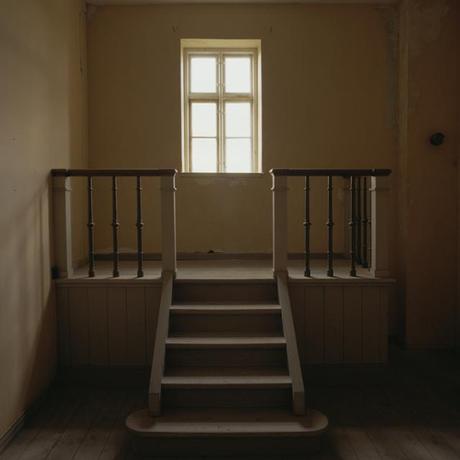
Interiors
I tuoi primi lavori si focalizzano sulle persone e sulla natura. Qual’è la differenza tra il fotografare esseri viventi e oggetti inanimati?
Non c’è una grande differenza, ma naturalmente io vengo coinvolta in modo diverso quando fotografo le persone perchè ho bisogno di comunicare con loro e di dirigerle. Negli anni ho lavorato con l’interazione fra le due forme. Come artista non ho un repertorio fisso di generi o soggetti, ripeto. Sono libera di scegliere, a seconda di dove mi portano le mie inclinazioni e le mie idee.
Your earlier works focus on people and nature. What’s the difference between photographing living and static subjects?
There’s not a big difference, but of course I get involved in a different way when I photograph people because I need to communicate and direct them. Over the years I’ve worked with the interaction between the two forms. As an artist I don’t have a fixed catalogue of genres or subjects I repeat. I’m free to choose, depending on where my ideas and inclinations take me.
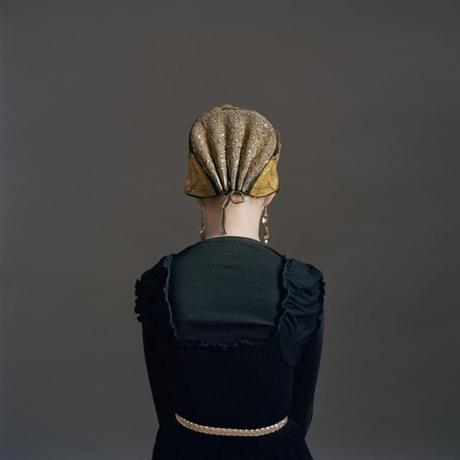
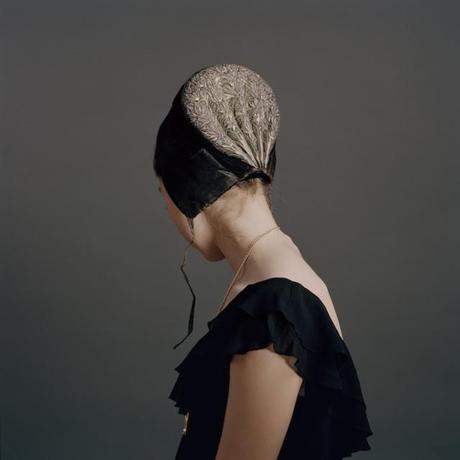
Guldnakke
Le tue immagini, in questa serie e nei primi lavori, possiedono una qualità che si potrebbe definire “sommessa”. E’ una scelta consapevole?
Quando iniziai a fotografare, il mio lavoro era basato sulla tradizione documentaristica. Volevo scattare immagini dinamiche e che allo stesso tempo raccontassero diverse storie. Solo più tardi mi sono concessa di essere “noiosa”. Mi sentivo piuttosto interdetta nello scattare immagini che fossero così pacate. Non mi sento più così. Ora lavoro consapevolmente testando i confini dell’immagine, vedendo quanto questo possa essere si tranquillo ma senza che si perdano vita e magia visuale.
Your images, both in this series and earlier works, have a certain hushed quality. Is this a conscious choice?
When I started photographing my work was based on the documentary tradition. I wanted to make dynamic images that told several stories at once. Later I gave myself permission to be ‘boring’. It felt almost forbidden to make images that were so muted. I don’t feel that way anymore. Now I work consciously with testing the boundaries of the image – seeing how quiet it can be without losing its life and visual magic.
http://www.trinesondergaard.com/
http://www.brucesilverstein.com/index.php
Intervista: Gitte Broeng per TRINE SØNDERGAARD
Traduzione dal danese di Jane Rowley
Traduzione italiana di Federica Galetto


